
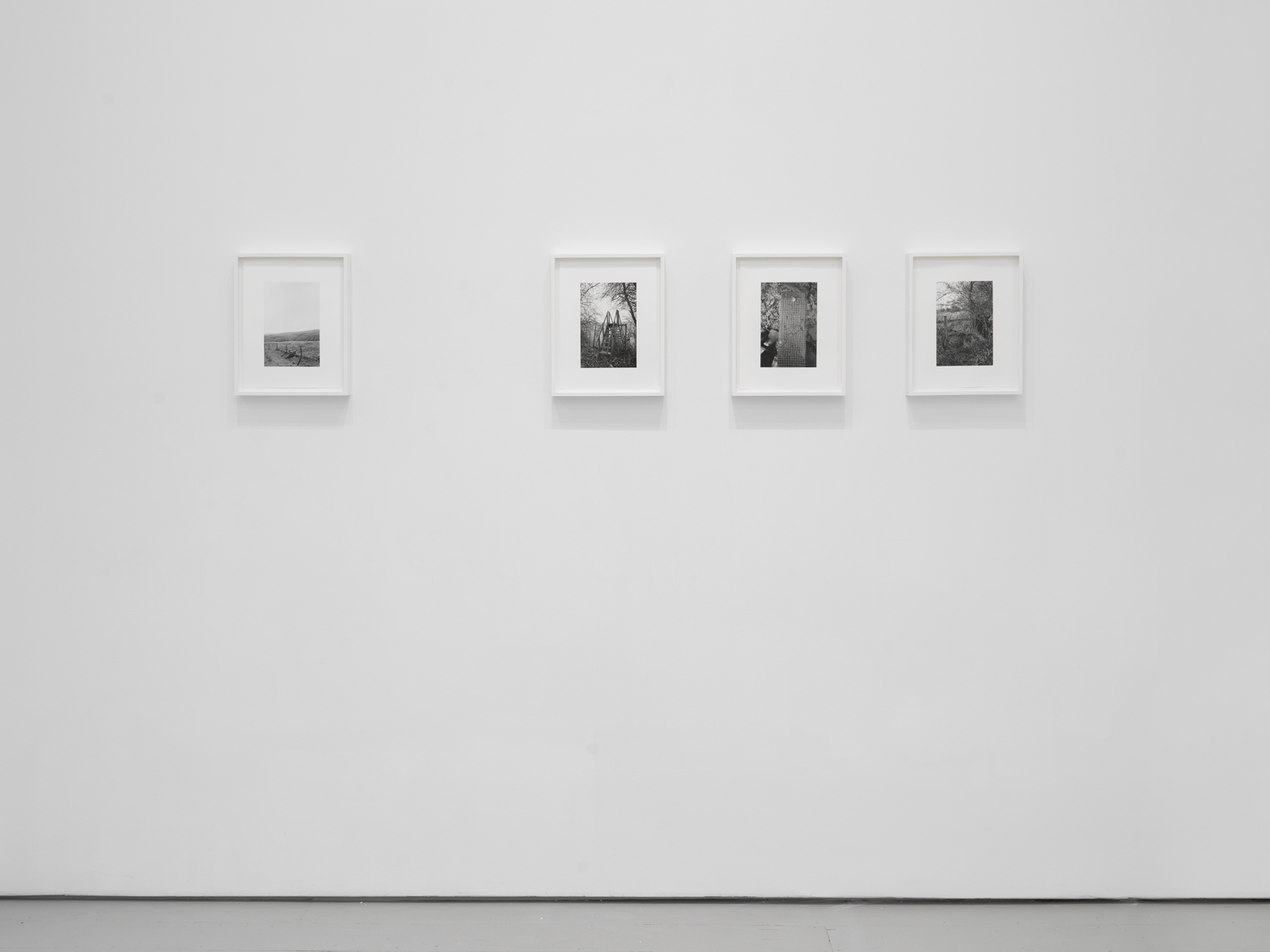


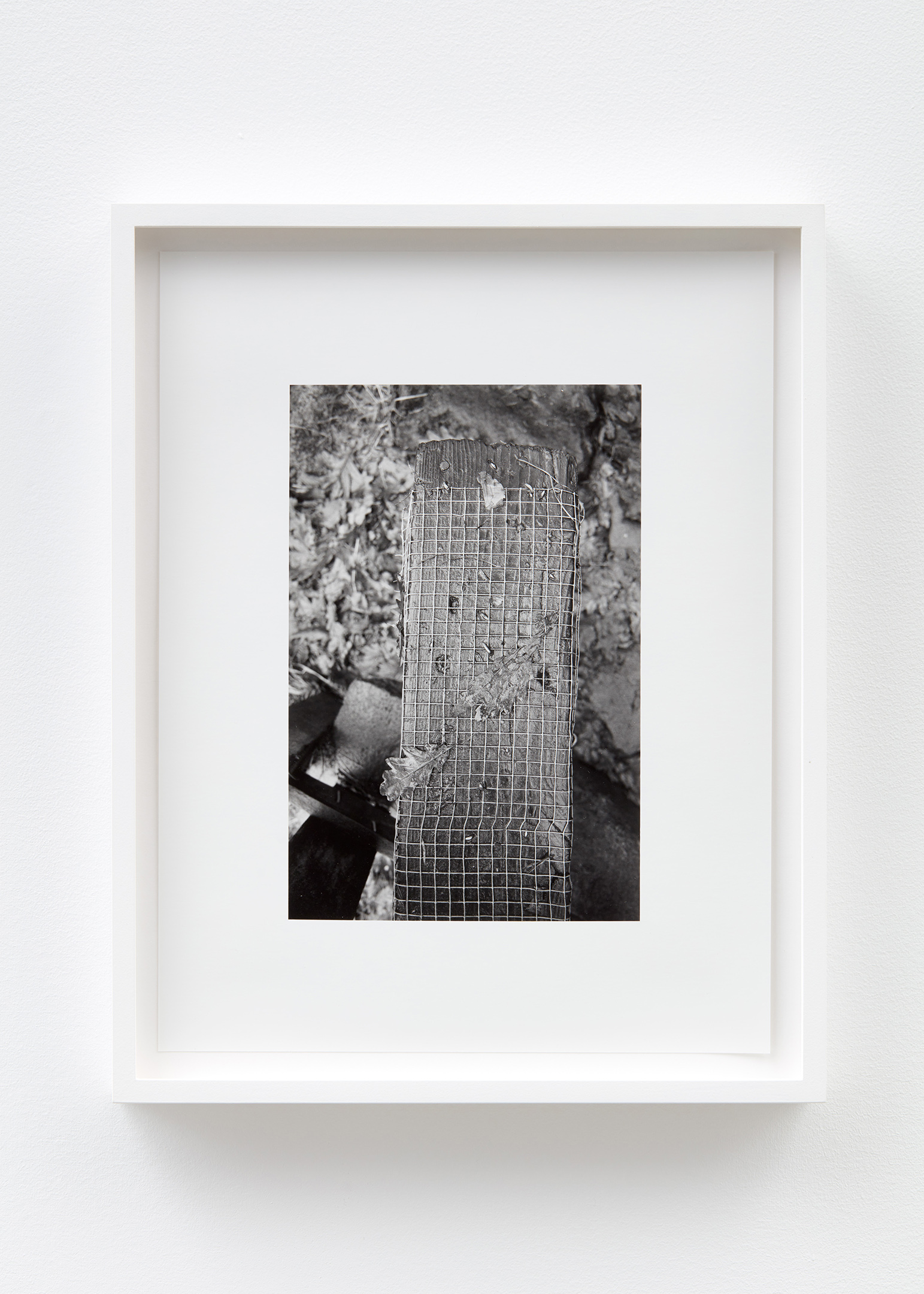


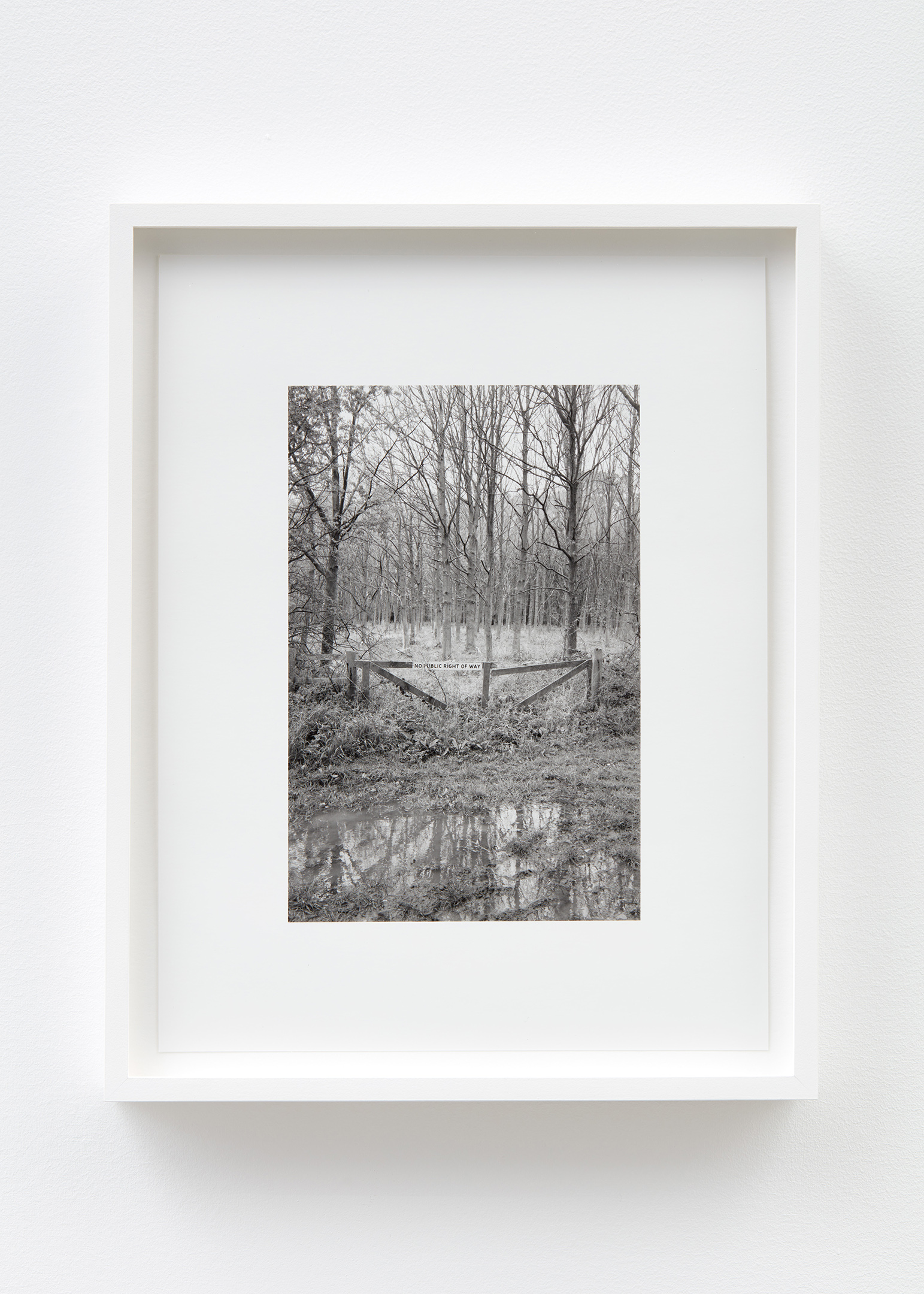
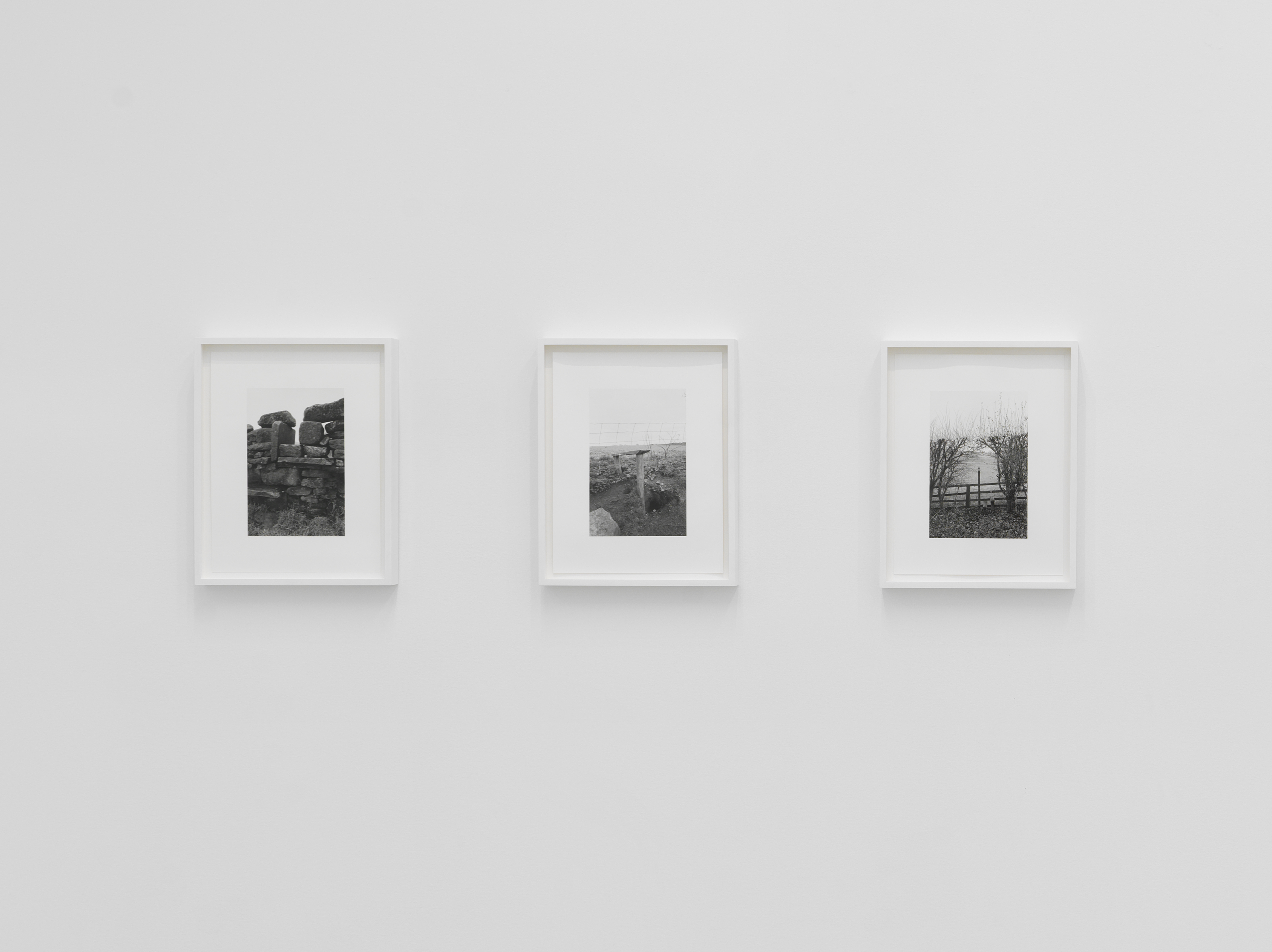



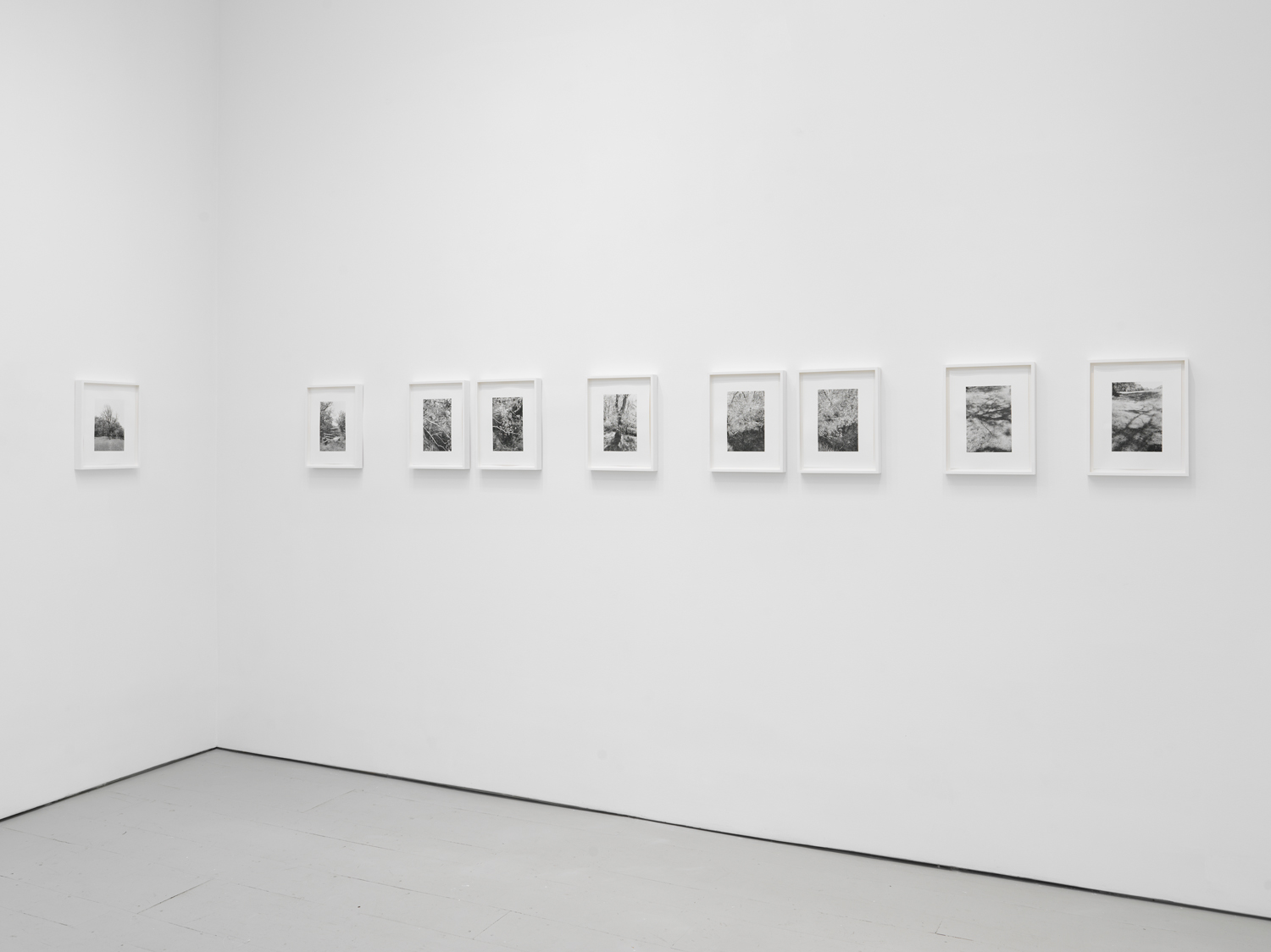


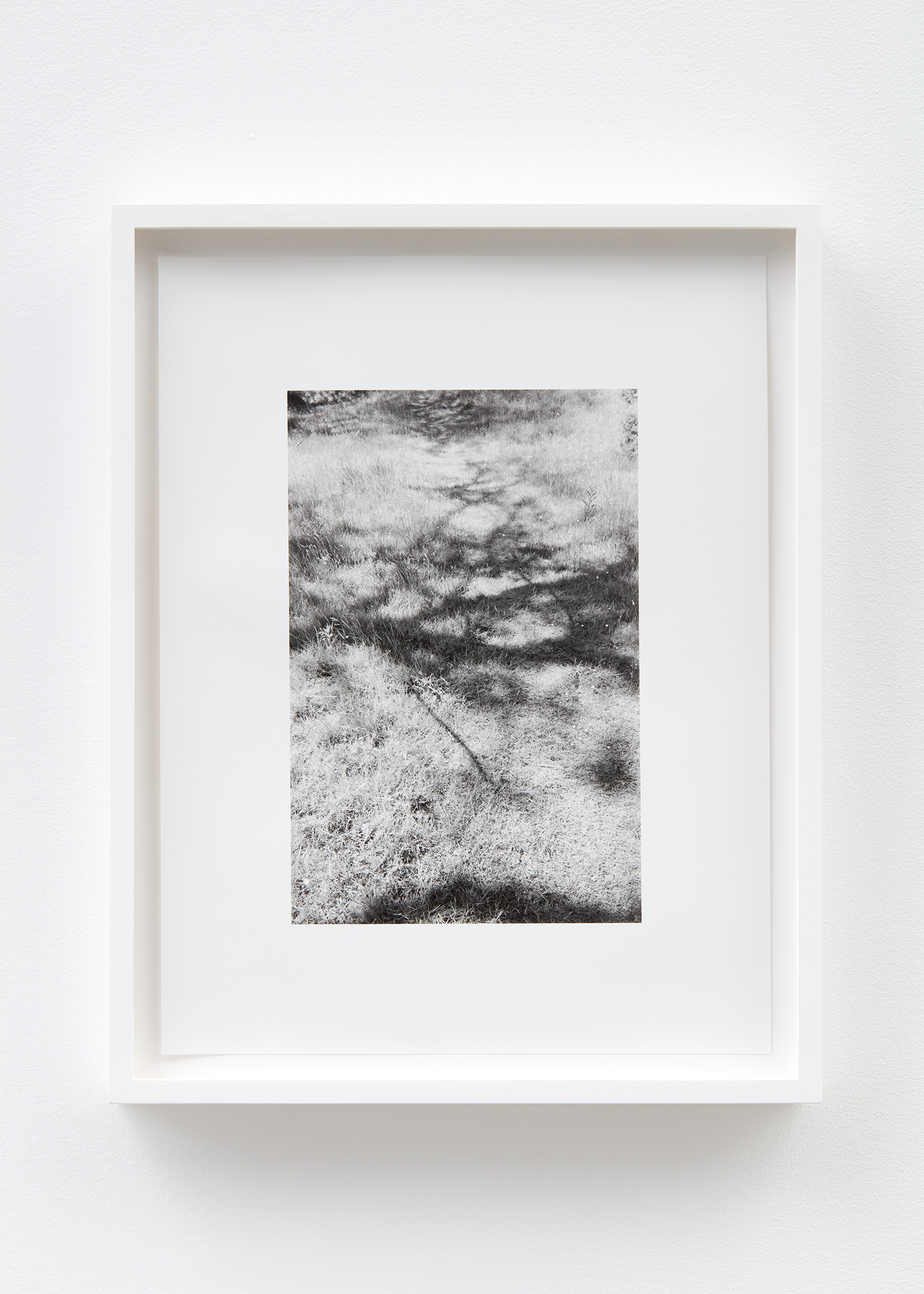

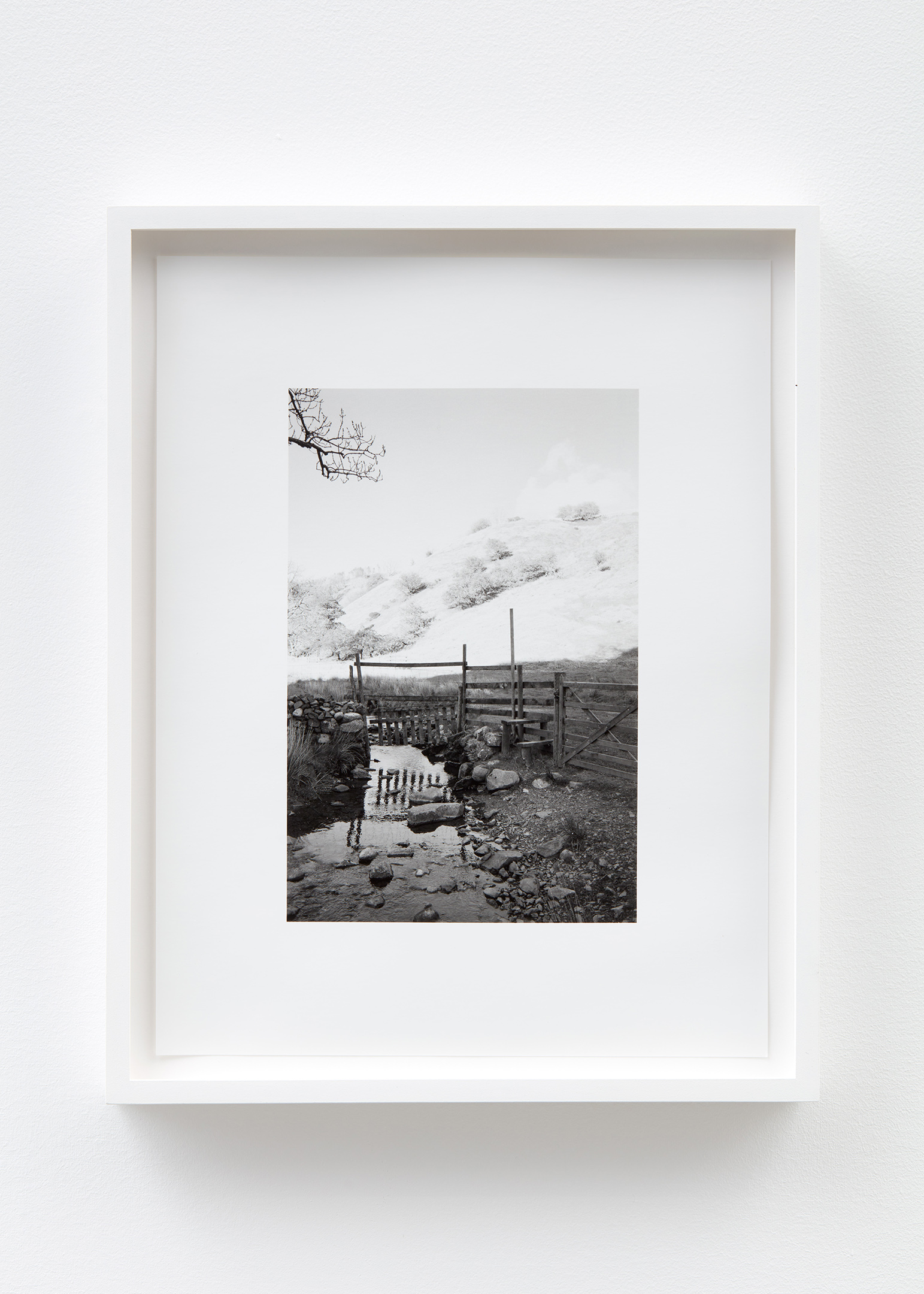
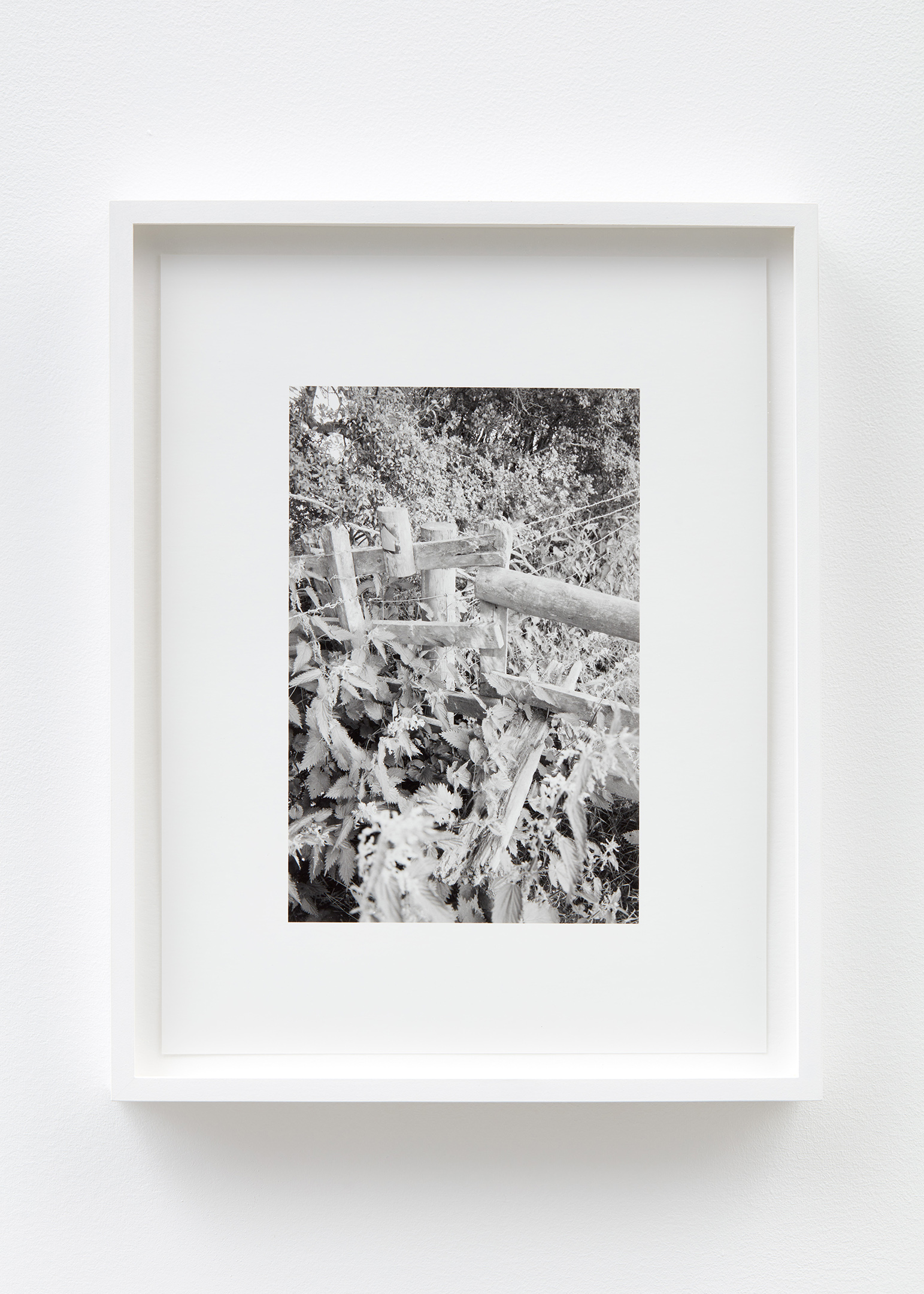
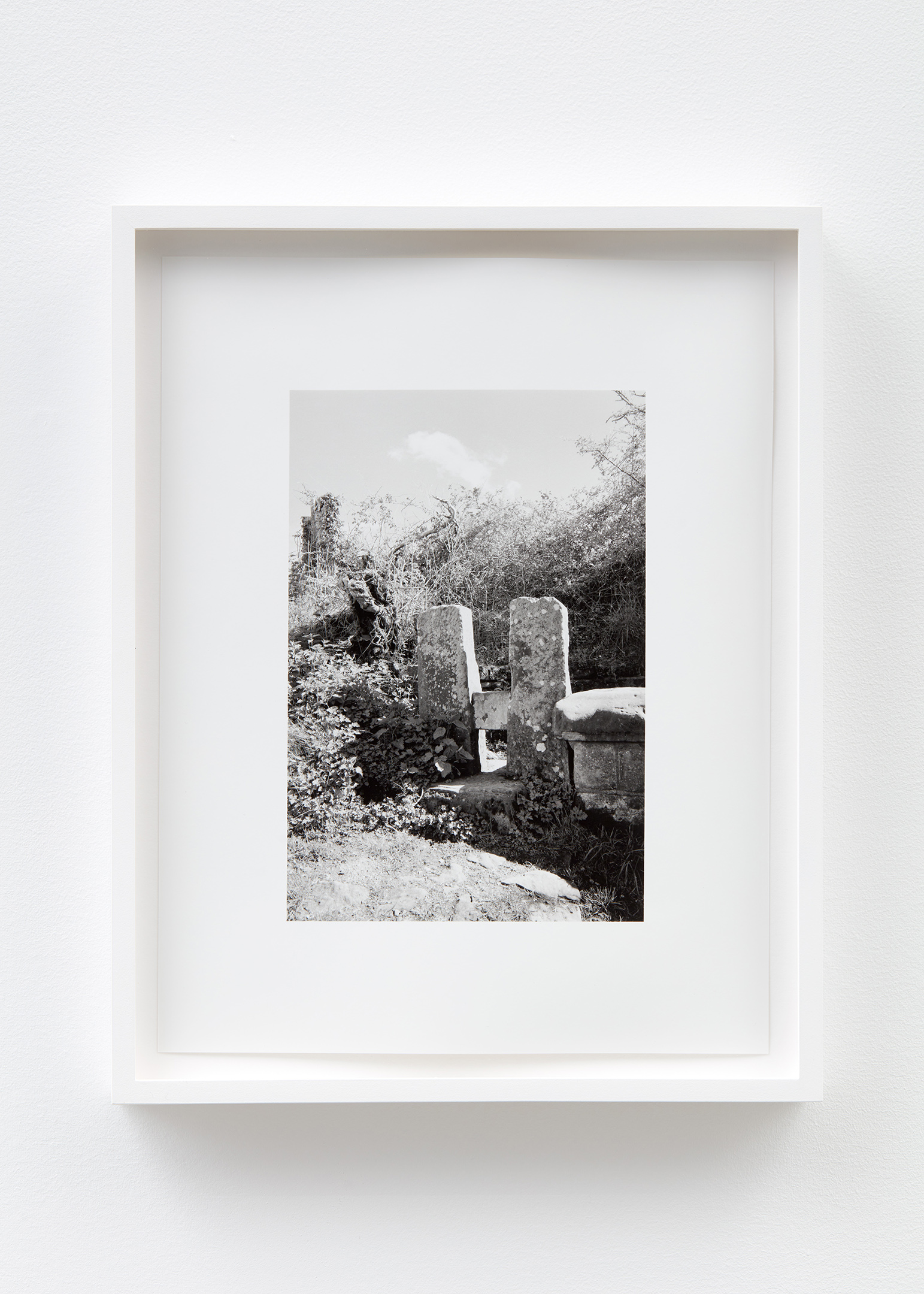
These are quiet places, but their quietness is suggestive. The worn paths and spaces between walls trace presence. The vegetation is lush, tangled, profuse. Everything leans into everything else, germinating, growing, subsiding, collapsing, and then regenerating.
– Daisy Hildyard
Klaus von Nichtssagend is pleased to present a selection from Sam Contis’s latest work, Overpass, a series of photographs made while walking a sprawling network of footpaths in northern England. Following these public rights of way across privately owned land, Contis considers the movement of bodies through the landscape. In her handmade gelatin silver prints, she directs our attention to the stiles she encounters on these paths – the simple structures that allow passage over walls and fences. Contis shows these stiles as repeating sculptural forms, junctures where private and public interests intersect.
In one image, we see the imposing, moss-covered blocks of a stone wall, still damp from mist and snowmelt. Flat slabs of rock protrude from the wall, offering steps up and through an opening just wide enough for a body to pass. In another image, a decaying wooden stile is almost entirely hidden among stinging nettles, except for a small arrow pointing the way forward, over barbed wire and slatted fencing. Contis’s richly detailed photographs show multiple layers of presence: an animal tunnel dug under a wire fence, dense vegetation obscuring worn paths. A reorientation of the landscape genre, these images, all made in ‘portrait’ format, reveal the convergence of many histories and bodies in the environment.
The exhibition is structured around the four seasons. On each of the walls of the gallery, Contis creates groupings of images that generate a cinematic sense of movement: snow-covered stone walls yield to blossoming trees and rushing water. In one sequence of nine images, we approach two stiles from a distance, crossing a field of tall grass. A large tree looms above us; as we move closer, we see its branches reflected in the stream below, its shadow dappling the ground as we continue up a hill. By never directly showing a specific body, the images leave space for the viewer to inhabit and move through the landscape. In Overpass, Contis creates a new kind of typology – at once an index of these forms and a dynamic survey of the natural environment: its borders, barriers, passageways, and possibilities.